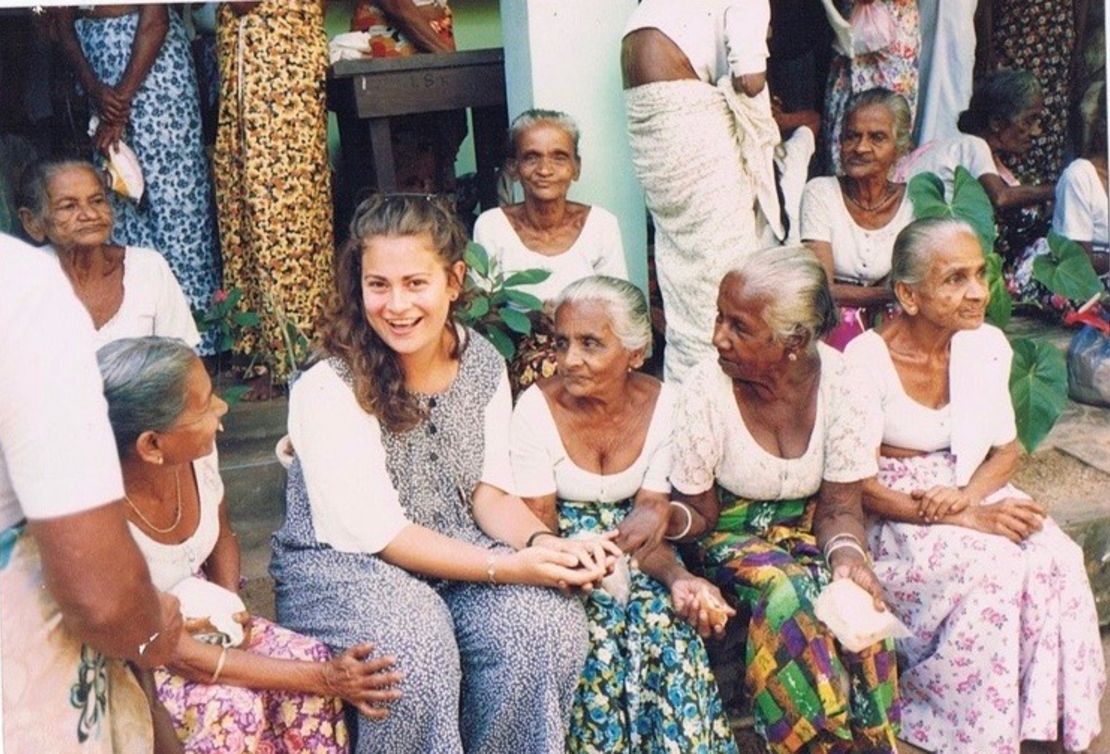Editor’s Note: Elana Rabinowitz was a Peace Corps volunteer in Sri Lanka from 1994-1996. She is a freelance writer and ESL teacher. Follow her on Twitter @ElanaRabinowitz. The opinions expressed in this commentary are her own. View more opinion articles on CNN.
I awoke on a seemingly peaceful Easter Sunday. That was until I noticed former host families, friends and colleagues who had been “marked safe during attack in Sri Lanka” on Facebook. I frantically searched the internet and saw the headlines – nearly 300 dead, more than 500 injured in a series of deadly blasts in Sri Lanka.
Instantly, I was transported back in time to the mid-1990s, when I worked as a Peace Corps community development facilitator in a rural village not far from the Sri Lankan capital, Colombo. I could smell the coconut oil and feel the humidity from the endless scorching days. I could see those ubiquitous Sri Lankan smiles – from the toothless old accis (grandmothers) wearing fragments of flowered clothes saris, to the old men with red betel juice oozing out of their mouths.

But I could also remember that moment when I had my brush with Sri Lankan terror.
I had been living in the country for almost two years, and in late January 1996, my time volunteering was approaching its end. Craving a night out, I made plans with friends in Colombo – we would smoke cigarettes, have a few drinks and then dance all night at The Pink Elephant, one of my favorite nightclubs.
However, I overslept and missed the first bus from my village in Pilikuttuwa to Colombo. And that turned out to have been the greatest mistake I could make. If I had been on the earlier bus, I would have passed by the Central Bank around the time a Tamil separatist rammed a truck full of explosives into the building – killing 60 people and injuring more than 1,000.
Instead, I was on the late bus, and when I heard the news, I went straight to the Peace Corps office. When I walked into the office, I could tell my country director wanted to scream at me for not letting anyone know where I was – a basic rule of the program. But she was so relieved to see I was alive that she hugged me instead. Over the next few hours, I sat in the office and watched – with both dread and then relief – as my colleagues arrived and informed our director they, too, were safe and sound.

Of course, when I lived in Sri Lanka, it was at the height of the civil war between the government, run by Sinhalese Buddhists, and the Tamil separatists, largely Hindu, fighting for their independence. Terrorist attacks – carried out by the Liberation Tigers of Tamil Eelam, a militant group of the separatists – were far more frequent, and so many had gruesome stories to share.
But after nearly 10 years of peace, Sunday’s attacks shattered that tranquility – and the atrocities far surpass anything I witnessed during my time there. These attacks targeted Christians at their most vulnerable – attending Easter Sunday services – and tourists looking to explore the wonders of the tiny island nation.
If I were in Colombo today, I would hug all the innocent men, women and children whose lives were shattered in an instance – the way my country director hugged me two decades ago. But I’d take it one step further – I’d offer them the two things that Sri Lankan villagers always offered me when I visited their homes: tea and kindness.
Sri Lankans, regardless of the political strife, always make foreigners feel welcome. I wish I could do the same for them now.
While Sunday’s attack may not be linked to the one I experienced, it reminds me of the pain of those war-torn years and the ways in which we overcame the loss. It was in Colombo, after all, that I learned the human spirit is boundless, and that we are capable of surviving even when we think we can’t.
The country of Sri Lanka is shaped like a teardrop. For now, it symbolizes the pain and sorrow of a bloody Easter Sunday. One day, though, it will symbolize the happiness of an island that has rebuilt and come out that much stronger.
Update: Four days after the coordinated attacks, the Sri Lankan Health Ministry revised the death toll, saying 253 people had died. That toll is significantly lower than the 359 initially reported to CNN by a Colombo police spokesman this week. The health ministry cited the condition of remains and the difficulty in identifying them for the discrepancy.
